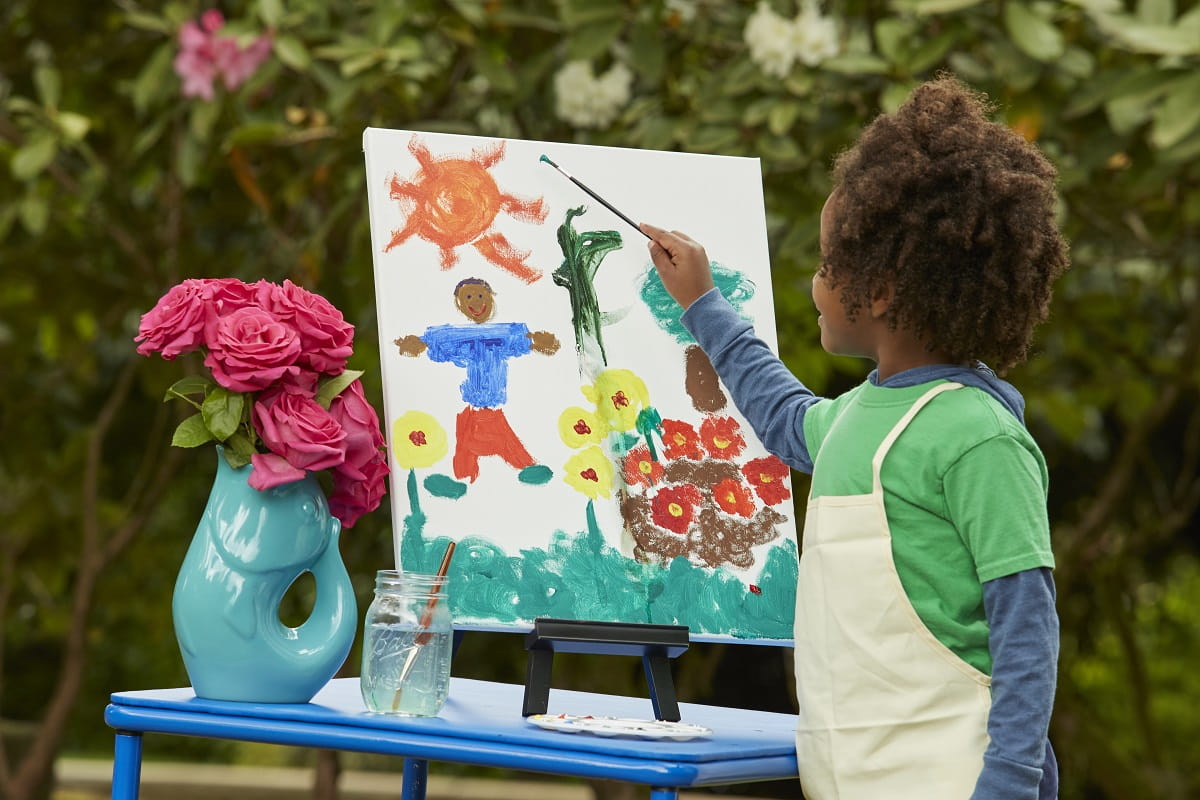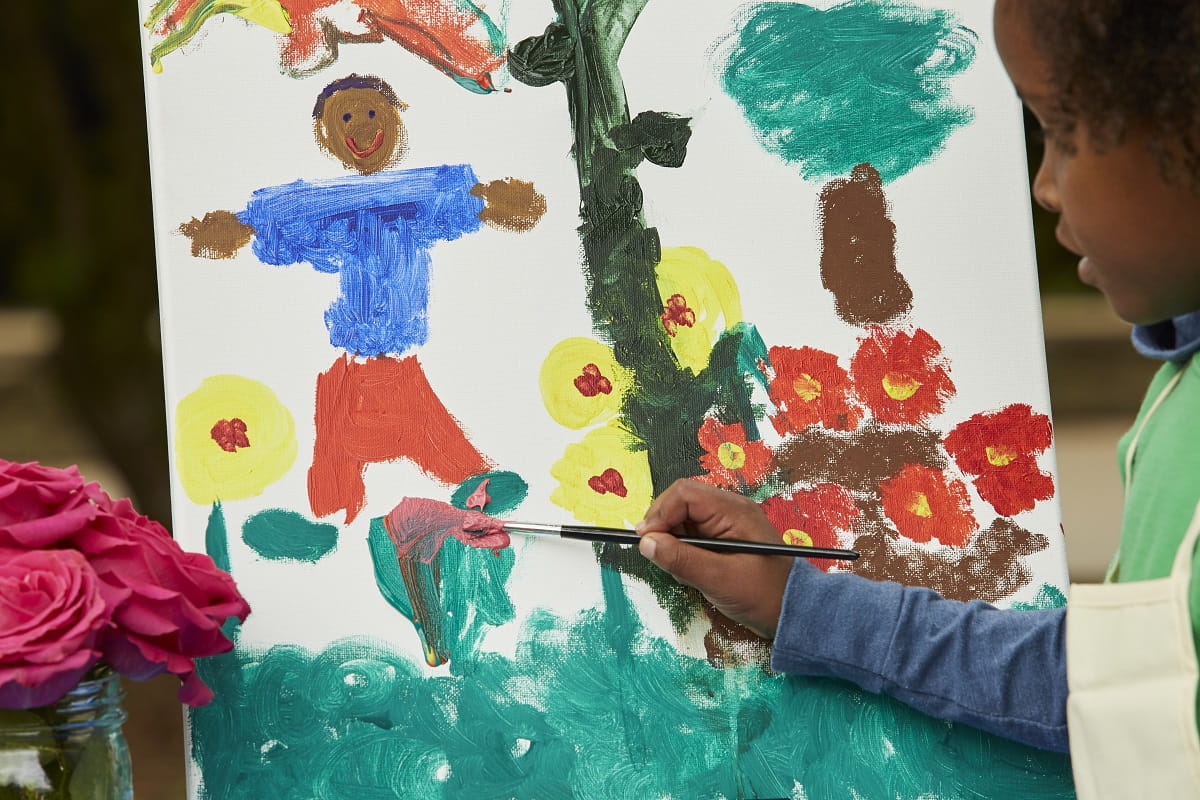Little Monets in the Making: Painting "en Plein Air"

Every May, four-year-olds in our centers learn about Impressionism, a style of art that celebrates the wonder and freedom of painting “en plein air,” which simply means painting outdoors.
Your little one can express their own artistic vision—and perhaps capture the fleeting beauty of a budding rose on a warm spring day—by setting up their easel in the garden or at a park. Here are five tips for a creative outdoor painting, inspired by our fine arts curriculum and the classic Impressionist painting In the Garden by Childe Hassam.
1. Before Painting en Plein Air, Brush up on Impressionism
A quick refresher on this modern art movement will open up all sorts of conversations with your budding Monet. The Impressionist art movement was started in France by a group of young painters who were inspired to look at art in a whole new way. Rather than making an object or scene look realistic, these artists focused more on light and color to capture the momentary, sensory effect of a scene—or more simply put, the impression it made.
Many Impressionist painters created their works en plein air, meaning they brought their brushes and easels outside to capture street scenes and cityscapes, fields, gardens, and yes, those famous water lilies. Check out these famous names to learn more about Impressionist artists: Monet, Cezanne, Degas, and Cassatt.

2. While Painting Outdoors, Look at the World Anew
Many Impressionist painters painted the same natural scene over and over to capture how the light, weather, and seasons changed the feeling or the look of the object. Your child can try it, too!
- Have them pick a subject to paint outdoors, like a beautiful flower, a favorite tree, a swing set, or even the sky itself.
- Then have them paint it at different times of day, such as in the bright noon sun, at sunset, or under an overcast sky.
- Look at their completed paintings together. How do they change depending on the weather or the time of day?
3. Paint in Swoops, Strokes, Dabs, and Dots
Impressionist artists applied paint in lots of different ways, such as using big strokes of color, circular dabs of the brush, tiny dots, or quick lines.
- Encourage your pint-size Cassatt to explore putting their brush to the page in new ways.
- Round up a few different kinds of brushes, from fat to fine, and invite your child to try out a variety of brushstrokes.
- Ask: “What would happen if you made a painting with dots?” or “How many different brushstrokes can you use to paint that flower?”
4. Go Ahead: Mix up Those Colors
Impressionist outdoor paintings can inspire us to recognize the breathtaking range of colors and hues in the natural world. For example, a single blossom can be made up of many different shades of red, and sunlight dapples and changes the green hues on different sides of leaves. Many children’s paint sets come with primary colors (red, yellow, and blue) and secondary colors (green, purple, and orange).
Try adding some white paint or just a dab of black to your little artist’s mix. Use a paper plate works to let them explore color blending. Does adding a little white help them capture that rosy hue?
5. Don’t Be Afraid to Get Messy
The best part about painting outside? No need to worry about spills or splashes on carpets and furniture! Painting in the garden can help kids relax, move around, and reap the benefits of fresh air while creating something beautiful.




